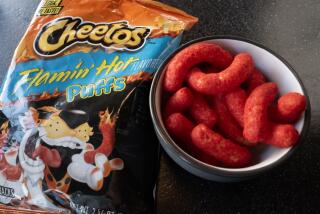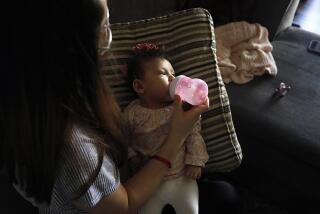Coke Kept New Formula Secret Nearly 4 Years
ATLANTA — Coca-Cola Co. used secret meetings, code names, paper shredders and deceptive memos in its highly successful effort to keep secret for nearly four years the decision to change the formula for Coke, two publications said Monday.
The soft-drink giant last week announced a change in the 99-year-old formula to one that is slightly sweeter. Like the old one, the new formula will be kept locked in a bank vault at Trust Co. of Georgia.
Coca-Cola officials have revealed few details about the change, except that the decision to begin research on a new formula was made “two or three months” after Roberto C. Goizueta took over in 1981 as chairman and chief executive.
‘Red Herring’ Strategy
But it remains a mystery how the company was able to allow 200,000 people in more than 16 cities to participate in taste tests for the new product without having word leak out that the formula for Coke was being changed.
Jesse Meyers, an authority on the cola industry and publisher of Beverage Digest, said in his latest newsletter Monday that Coca-Cola officials disguised their plans by using “red herrings.” As part of its strategy, the company:
- Told its employees in Puerto Rico, where the syrup based on the new formula was being manufactured, that the formula was for Cherry Coke, which was recently introduced.
- Sent artwork to package manufacturers outlining a change in design of the packaging for the Coke brand that touted 20% fewer calories.
- Sent a memo to its bottlers urging them to reduce inventories because a new design would incorporate a new logo marking the company’s 100th anniversary in 1986. “What Coke really wanted was for their bottlers to deplete their inventories,” Meyers said.
- Used the code name “Kansas” for the project. The name was taken from the company’s association with the late William Allen White, a noted Kansas newspaper editor. White once described Coke as “a sublimated essence of all that America stands for . . . a decent thing, honestly made, universally distributed, conscientiously improved with the years.”
- Placed orders for fake promotional material with several printing companies. Parts of the printing plates used to print the fake material were correct, and Coca-Cola officials took the correct parts from each plate to print the correct promotional material.
- Divided up the work on the project among offices in London, the Netherlands, California and New York to “hamper the news flow.”
- Shot most of the advertising photography in London to limit the chance of the new can’s being seen in the United States.
- Told lid manufacturers that the gold lids--which are being used to introduce the new Coke in the old cans until newly designed cans are available--were being added to mark the company’s 100th anniversary.
Shredder and ‘Bunker’
Advertising Age reported Monday that the ad agency for the new brand, McCann-Erickson, took “national security”-type precautions to ensure that word of the new formula would not leak out.
The magazine said the McCann-Erickson team named to handle arrangements for introduction of the new formula met in offices called “the bunker” in New York and fed the notes taken during each meeting into a paper shredder.
The team operated with no support staff to keep the number of people involved to a minimum. When staff support eventually was brought in, the magazine said, each person was required to sign a legal document stating that he or she would not disclose what was being worked on.
Meanwhile, Pepsico, saying it was seizing “the opportunity of a lifetime,” began a quickly conceived advertising campaign Monday that seeks to exploit its rival’s decision to change its formula.
In a television commercial that was whipped together in less than a week, a teen-age girl stares into the camera and asks: “Can somebody out there tell me why they did it? They said they were ‘the real thing.’ They said they were ‘it.’ And now they’ve changed.”
‘Now I Know Why’
After announcing that she is about to try Pepsi for the first time, the girl takes a sip from a can and says, “Ummm. Now I know why.”
Pepsi began work on the new commercial immediately, shooting it Friday on videotape instead of film so it would be ready faster.
“We see it as the opportunity of a lifetime, and we cannot simply let it pass by,” Pepsi spokesman Ken Ross said.
Ross said the ad, slated for use on all three major commercial networks Monday night, will get heavy play over the next month and may be replaced by more ads exploiting Coke’s change.
Ross would not comment on how much Pepsi is spending on the campaign but would not deny reports that it was in the vicinity of $2.5 million.
More to Read
Eat your way across L.A.
Get our weekly Tasting Notes newsletter for reviews, news and more.
You may occasionally receive promotional content from the Los Angeles Times.










